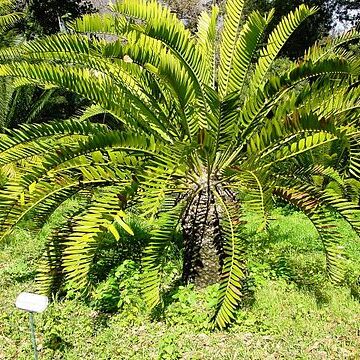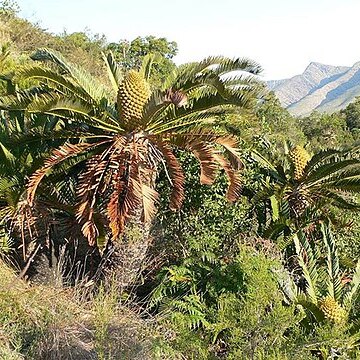A medium sized cycad. It has a trunk 4.5 m tall and 45 cm across. It grows in clumps of up to 10 stems. There are suckers near the base. They young leaves are light green and hairy. The mature leaves form an umbrella shaped crown. They are 1-2 m long by 30-40 cm wide and dark green. The leaf stalk is 30-35 cm long. The leaflets are oval and crowded and overlapping near the tip. The lower leaves are small. The cones are different. They are olive green with one on each stem. The male cones are 40-60 cm long by 15-20 cm wide. The fruit stalks are 3-5 cm long. The female cones are 50-60 cm long by 25-30 cm wide and without fruit stalks. The seeds are 4-5 cm long by 2-3 cm wide. They are oblong, angular and red.
Plant dioecious, palm-like. Stem aerial or decumbent, 0.5-3.5 m long, unbranched or branched from base, covered by alternating series of woody bracts and persistent, swollen, truncated leaf bases. Leaves petiolate, pinnate with rachis recurved; median leaflets entire, pungent-pointed; reduced in size towards base of rachis. Cone May-Dec., single, appears sessile, green. Male cone oblanceoloid. Female cone cylindric to ovoid, broader than male, facets markedly verrucose, central facet raised.
Dioecious tree to 3 m, often branched below. Leaves pinnate, dark green, leaflets finely pubescent, oblong-lanceolate, pungent, usually entire. Female cones olive-green, to 60 cm.



